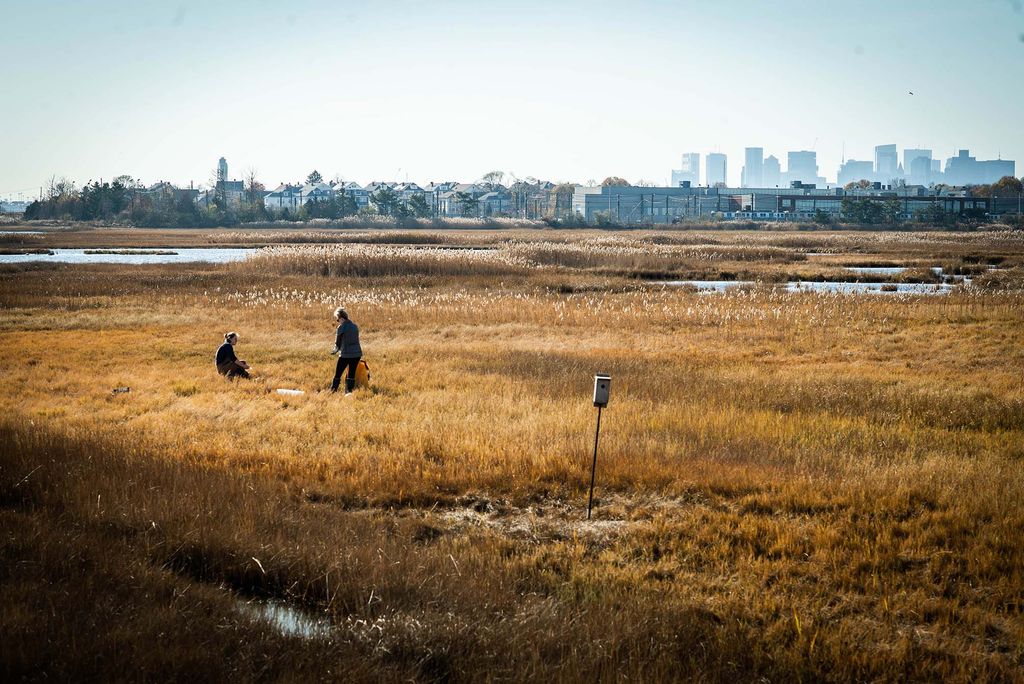In a rapidly warming world, coastal ecosystems are some of the most important places to protect, and for good reason: coastal and marine ecosystems, like wetlands and salt marshes, are known to absorb and store large amounts of atmospheric carbon dioxide (CO2). This CO2, along with any CO2 stored in ocean ecosystems, is called "blue carbon," and it's what Boston University ecologists are working to measure.
Although some coastal ecosystems store more carbon than forests, ecosystems ecologist Robinson W. "Wally" Fulweiler, a BU College of Arts & Sciences professor of Earth and environment and biology, says coastal systems, and blue carbon in particular, have been vastly under-studied. And the more we keep emitting CO2 into the atmosphere by burning fossil fuels, the more urgently marine carbon sinks need protecting.
Fulweiler and postdoctoral associate Amanda Vieillard (CAS'11, GRS'13), along with their collaborators, biologist Peter Girguis and social scientist Zara Mirmalek at Harvard University, are looking to fill the knowledge gap by making affordable, portable, easy-to-use sensors to measure blue carbon levels at coastlines-and to make science more accessible to everyone.

The sensors, which are in their prototype phase, measure the air just above the grassy surfaces of marshes and wetlands, allowing researchers to see how much CO2 is released or absorbed by the wetland. Fulweiler and Vieillard envision the sensors eventually being used by citizen scientists who can support efforts to better understand these vital ecosystems by collecting and logging data in a systematic way. Their findings could potentially serve as a guide for conservation and restoration efforts in marine areas, and help improve our understanding of how much carbon is being stored and released at the collection sites. Eventually, Fulweiler and Vieillard hope their sensors will be able to detect other climate-warming greenhouse gasses like methane, and be used in other coastal ecosystems, such as mangrove forests and seagrass meadows.
In the video above, Fulweiler and Vieillard demonstrate how the sensors can be used by local communities and explain the importance of creating pathways for getting more people involved in scientific research.
The sensors measure carbon in the air above the marshes. Amanda Vieillard (left), a postdoctoral associate, and Robinson W. "Wally" Fulweiler (right), a professor of Earth and environment and biology, make them in Fulweiler's BU lab. Photo at right by Cydney Scott






